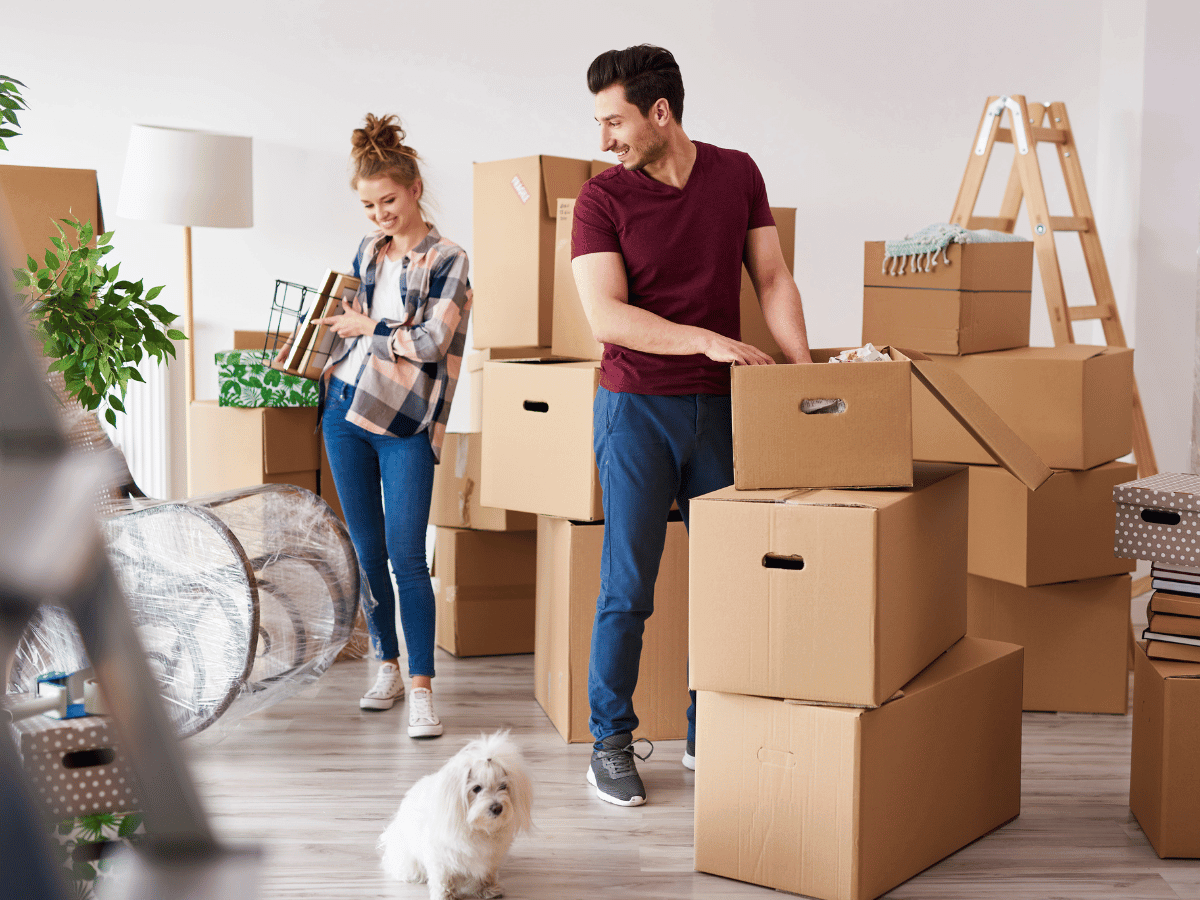
Packing to move house is unlike any other kind of packing. It can feel like putting together a life-sized jigsaw puzzle. Between organising your belongings, filling boxes, and labelling everything, it’s easy to feel overwhelmed. But here’s the good news: the right packaging and packing methods can make your move significantly more manageable, reduce stress, and even protect your treasured possessions from damage.
We’ll look at the best types of packaging to use when moving house, and how to plan it all. We’ll help you save time, energy, and maybe even a plate or two in the process. From cardboard boxes to plastic containers, packing lists to damage prevention, we’ve got you covered. Plus, we’ll introduce how self-storage fits seamlessly into the process.
When deciding between cardboard boxes and plastic containers, it’s important to consider your specific needs. Both options have pros and cons, and the choice often depends on what you’re packing and the conditions of your move.
Cardboard boxes are a universal choice for packing to move house, and for good reason:
However, there are a few drawbacks. Cardboard is susceptible to moisture and is less durable over long periods, making it unsuitable for heavy or fragile items without reinforcement.
Plastic containers offer a substantial and durable solution:
On the downside, plastic containers are pricier and less eco-friendly unless you commit to reusing them.
Tip: Use a mix of both. For lighter items like clothes, cardboard boxes work well. For valuable or fragile items like electronics, glassware, or important documents, swap in plastic containers to ensure maximum protection.
Packing is more than just throwing things into boxes. A well thought out packing plan can save you countless headaches on moving day.
Packing to move house always takes longer than anticipated. Begin with non essential items like out of season clothes or décor. Aim to pack a few boxes each day rather than cramming it all into the last weekend.
Pack one room at a time and label each box clearly. This approach makes unpacking at your new home easier and faster.
Prepare an “essentials box” with all the key items for your first night in your new home. Include:
Write down everything you need to pack and check items off as you go. This ensures nothing is forgotten, from the mirror in the guest bathroom to the cheese grater in the kitchen.
Select materials that match the items you’re packing. For example:
Packing to move house properly using the right materials should prevent breakages and damage. You want everything to arrive in your new home in one piece!
Use bubble wrap, tissue paper, or even household items like towels or clothes to protect breakables. Stack plates vertically, as they are less likely to break this way.
Empty spaces in boxes can cause items to shift, increasing the risk of breakage. Use void fillers like biodegradable packing peanuts, cardboard, or even crumpled newspaper to fill gaps.
Where possible, take furniture apart to make it easier to handle and less likely to sustain damage. Be sure to pack screws and small parts together in a labelled bag.
Prevent boxes from popping open by sealing them with heavy duty packing tape. Reinforce the bottom of cardboard boxes for added security.
For items like mirrors, TVs, or paintings, consider protective covers or corner protectors.
Tip: Don’t be afraid to add directions to each box. Instructions like “FRAGILE” or “THIS SIDE UP” are helpful, as well as labelling where in the home the boxes should go and a summary of contents.
Sometimes, the best way to facilitate a smooth move is by incorporating self storage into the plan. Whether you’re downsizing, facing delays between moving dates, or simply overwhelmed by the amount to pack, self storage can offer a practical solution.
Before putting your home on the market, storing unused items (like seasonal furniture, sports gear, or overflowing wardrobes) can help present your property in the best light.
If your moving dates don’t align perfectly, a storage unit offers a secure place to keep your belongings until your new home is ready.
Rather than cramming everything into your new space, self storage gives you the flexibility to move in at your own pace. Retrieve items as you need them, keeping your new home neat and organised from the start.
Look for storage facilities with premium features like:
Here at Blue Box Storage, we offer a variety of sizes of clean, dry, and secure storage units and eco-friendly packing materials. With our advice, you may even find that you don’t need as much space as you think! Your choice of packaging materials and process can vastly improve your moving experience, from keeping your belongings safe to making unpacking easier. With the materials to get you packed, and facilities to help you during the move, Blue Box Storage is an ideal partner for your move. Contact us to get your competitive price.